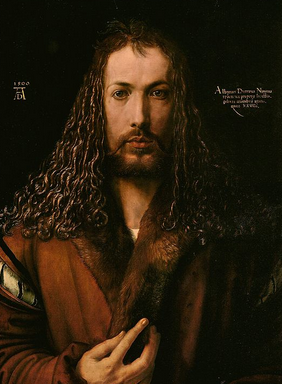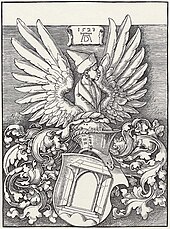Artist Showcase – Albrecht Durer – A True Master, One of My Artistic Idles.
-
Albrecht Dürer (21 May 1471 – 6 April 1528) was a painter, printmaker, and theorist of the German Renaissance. Born in Nuremberg, Dürer established his reputation and influence across Europe when he was still in his twenties due to his high-quality woodcut prints. He was in communication with the major Italian artists of his time, including Raphael, Giovanni Bellini and Leonardo da Vinci, and from 1512 he was patronized by emperor Maximilian I.
- Dürer was born on 21 May 1471, third child and second son of his parents, who had at least fourteen and possibly as many as eighteen children. His father, Albrecht Durer the Elder Albrecht Dürer (originally Albrecht Ajtósi), was a successful goldsmith goldsmith who in 1455 had moved to Nuremberg from Ajtós, near Gyula in Hungary. One of Albrecht’s brothers, Hans Dürer, was also a painter and trained under him. Another of Albrecht’s brothers, Endres Dürer, took over their father’s business and was a master goldsmith. The German name “Dürer” is a translation from the Hungarian, “Ajtósi”. Initially, it was “Türer”, meaning doormaker, which is “ajtós” in Hungarian (from “ajtó”, meaning door). A door is featured in the coat-of-arms the family acquired. Albrecht Dürer the Younger later changed “Türer”, his father’s diction of the family’s surname, to “Dürer”, to adapt to the local Nuremberg dialect. Albrecht Dürer the Elder married Barbara Holper, the daughter of his master when he himself became a master in 1467.
Woodcut by Dürer of his coat of arms, which featured a door as a pun on his name, as well as the winged bust of a Moor Dürer’s godfather was Anton Koberger, who left goldsmithing to become a printer and publisher in the year of Dürer’s birth and quickly became the most successful publisher in Germany, eventually owning twenty-four printing-presses and having many offices in Germany and abroad. Koberger’s most famous publication was the Nuremberg Chronicle, published in 1493 in German and Latin editions. It contained an unprecedented 1,809 woodcut illustrations (albeit with many repeated uses of the same block) by the Wolgemut workshop. Dürer may have worked on some of these, as the work on the project began while he was with Wolgemut.
Because Dürer left autobiographical writings and became very famous by his mid-twenties, his life is well documented by several sources. After a few years of school, Dürer started to learn the basics of goldsmithing and drawing from his father. Though his father wanted him to continue his training as a goldsmith, he showed such a precocious talent in drawing that he started as an apprentice to Michael Wolgemut at the age of fifteen in 1486. A self-portrait, a drawing in silverpoint, is dated 1484 (Albertina, Vienna) “when I was a child”, as his later inscription says. Wolgemut was the leading artist in Nuremberg at the time, with a large workshop producing a variety of works of art, in particular woodcuts for books. Nuremberg was then an important and prosperous city, a centre for publishing and many luxury trades. It had strong links with Italy, especially Venice, a relatively short distance across the Alps.




